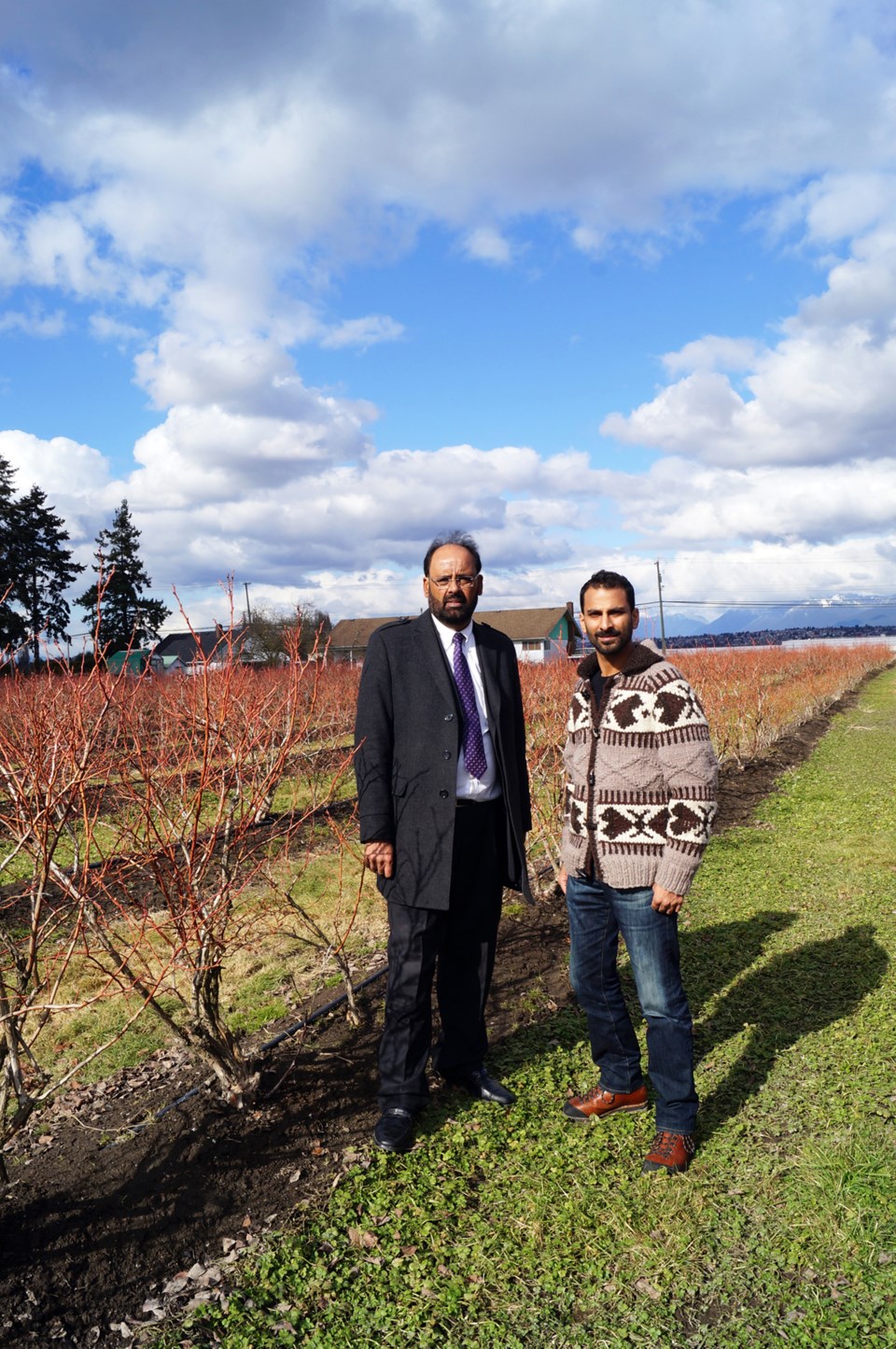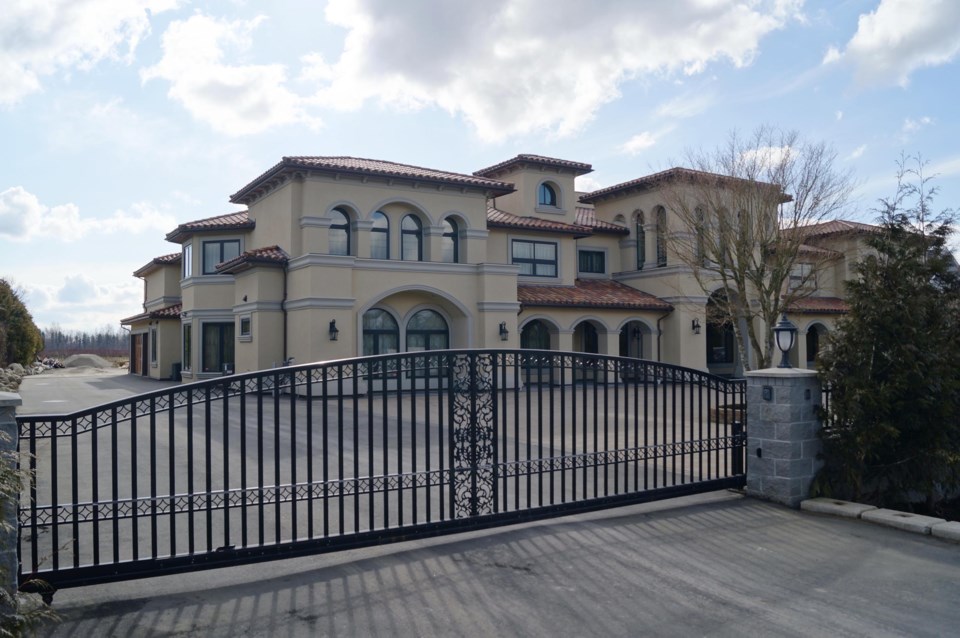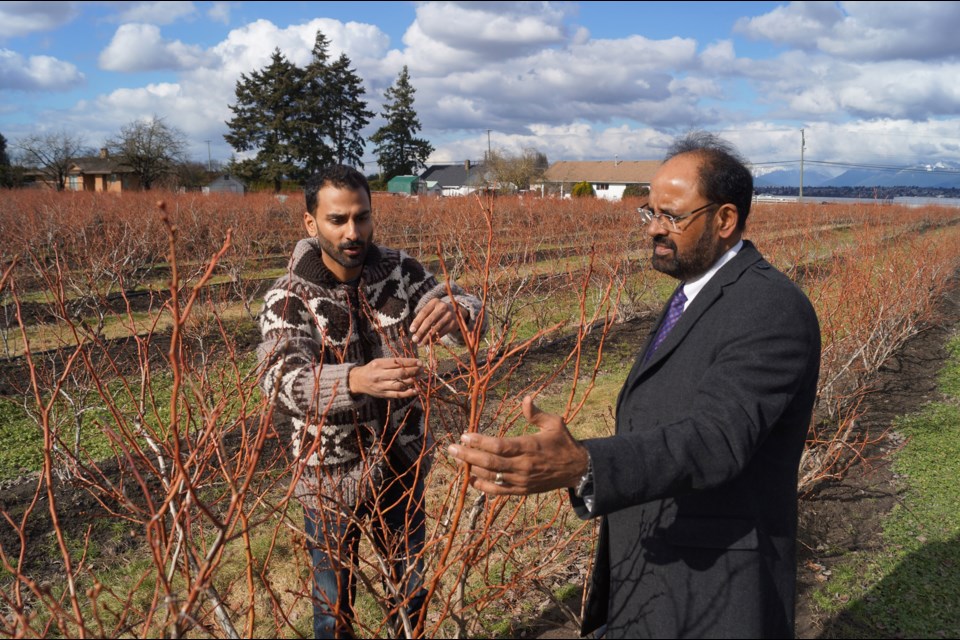For realtor and blueberry cultivator Gurdial Badh, property rights and respect for farmers are at the forefront of his concerns in the latest high-stakes debate at Richmond City Hall over residential land use — this time as it relates to protected farmland.
This month, city planners are concluding a short round of public consultation to be followed by an upcoming council decision on whether or not to rein in the size of homes that can be constructed on some 1,369 parcels of land in the Agricultural Land Reserve (ALR), which accounts for 39 per cent of the municipality’s land.
“The main issue, I guess the concern is, a couple of the councillors are starting to talk about bringing in the house size for farmland. Our main concern is, yes there is an issue here — people are building big homes on farmland — but to now come in and say we want a house-size policy similar to [the Corporation of Delta] or this or that; it’s not what the farmers want and it’s not what we need. They’re telling me I can’t build a house for the needs of my family.
“Where’s the fairness?” asked Badh, who owns a 20-acre blueberry farm on Westminster Highway, which is up for sale for $6.9 million.
The City of Richmond has some of the most relaxed home-size restrictions on its ALR land in Metro Vancouver, where farmland is being heavily speculated on.
The Ministry of Agriculture has a guideline for ALR-municipalities that suggests no house be bigger than 5,832-square-feet (500-square-metres). A number of regional municipalities have limits that fall near those guidelines. In Richmond, homes can be as big as 60 per cent of the lot, but may not be built further than 50-metres away from the road, which limits sizes on narrow lots but effectively does little to limit homes on wide lots. As such, in 2010 the average size of new homes on farmland was 8,557-square-feet. In 2015, average sizes peaked at 12,583-square-feet.
Home size restrictions on ALR in square footage (main home / secondary home if permitted by municipality)
- Ministry of Agriculture guidelines: 5,382 / 3,229
- Delta: 3,552 / 1,937
- Port Coquitlam 5,382 / 2,692
- Maple Ridge: 6,996 / 3,003
- Surrey: Only restricts “home plate” to 21,528 (all farm-related structures including house must be on home plate)
- Richmond: 60 per cent of the lot size, built up to 50-metres from the road.
Badh sees the debate to restrict home sizes in Richmond as one that pits farmers against “city slickers,” who comprise council, which is attempting to “swat a fly with a sledgehammer” in its attempt to protect farmland — an attempt he views as hypocritical.
“I haven’t seen them stop all this illegal dumping that’s going on. I haven’t seen them act on people that aren’t (farming) anything,” said Badh.
Other concerns from Badh include the city’s lack of services for farmland (irrigation needs; few road upgrades/repairs in east Richmond) and no apparent support for local growers.
On local support, council has passed a number of initiatives to support local farming. And it does have an illegal dumping bylaw and hotline.

But action and enforcement is lacking, said Badh, just as it has been with illegal hotels and gaming houses on the ALR, issues he sees that have precipitated the call to limit house sizes on farmland (not the actual protection of farmland).
“Why are we thinking about putting the (house size) restrictions on farmland? The reason we’re thinking this is because some of these people have come in, they’ve built these big homes, and they’re not farming. Well, deal with that issue. Let’s not pass the buck and put the burden on the average farming family,” argues Badh.
“If (homes) are being used for non-farm uses, non-single-family uses, the city has bylaws to go enforce them. Why aren’t they enforcing the bylaws? Why are we shifting the blame, pitting the farmers against the general public?”
Badh and his farming colleague Bhupinder (Ben) Dhiman consider the loss of a half acre on a 10- or 20-acre lot, to accommodate a large house for their multi-generational Punjabi family, a small price to pay to keep the land operational.
“It comes down to what you need for your family and what you want to build for yourself,” said Dhiman, 36, who owns a 10-acre blueberry farm and is looking to upgrade his 4,400-square-foot, 1970s-style home.
“If I take the front half acre, or three quarters of an acre, how is that wasting farmland? Don’t farmers have the right to live on the property?” asked Badh.
Both claim a relatively small farm still requires a multi-generational family (and hence a big house) to tend to it.
Neither wanted to pinpoint an appropriate limit on house sizes.
“Let him (the owner) decide what is suitable for him on his property,” said Badh.
Both could, should they choose, exit the farming industry after building big new homes on their land, thus increasing its value by several millions of dollars — which then increases the value of neighbouring farms, further fuelling speculation.
When asked if he is concerned about the financial consequences of tighter limits, Badh said: “These regulations are going to put a hardship on regular property owners who are living here farming right now.”
Badh said he is a champion of farmland when he sells the properties, noting many prospective buyers approach him asking about the potential to build illegal hotels and gaming houses.
“I say that’s the last thing you want to do.”
Badh considers these scofflaws a detriment to farmland. For instance, the blueberry field next to his has fallen into disrepair and diseases are easily spread, he said.
Badh suggests the city and the provincial government take stronger measures to ban illegal operations and curb speculation on farmland, instead of limiting house sizes.

City flooded with building permit applications on farmland
The City of Richmond has received a flood of applications for building permits for houses on farmland since Jan. 3, around the time of a staff report to council on regulating the size of homes in the Agricultural Land Reserve (ALR).
In the past two months, planners have been handed 17 applications. By comparison, the city normally issues 15 permits per year (from 2009 to 2016 there were 103 permits issued for AG1 zones).
Fearing such an uptick, Couns. Carol Day and Harold Steves voted against public consultation on home sizes in the ALR on Jan. 23. Day had suggested immediately drafting a bylaw to temporarily limit homes to 7,500-square-feet and then taking the matter to public consultation.
Lot size matters in Richmond
Coun. Harold Steves contends one of the unique set of circumstances that exists in Richmond, which adds to the problem of large houses destroying farmland, is the fact that many of the Agricultural Land Reserve lots are small.
According to the City of Richmond, there are 1,369 parcels of land in the ALR, of which 61 per cent are less than one hectare (2.4 acres).
Because these lots are so small, under present-day regulations, a large home can cover nearly half the lot. For instance, on a 1.46-acre lot, the city has allowed an 18,900-square-foot home to be built, covering 0.6 acres.
The city does control how far back a home may be built (50 metres from the road), however if the lot is shallow this means even less farmland can be spared.
Steves said the small lots were created during the war era to provide returning soldiers with a piece of land to farm.
Staff report to council on ALR homes



